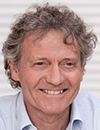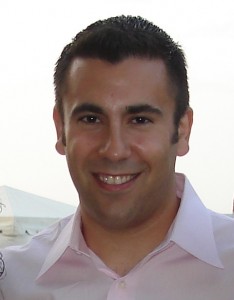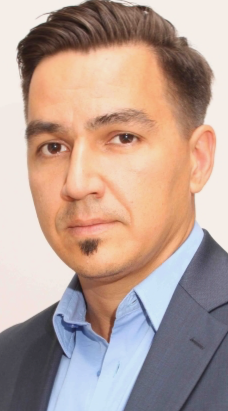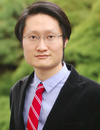
Thursday, 20 June 201908:00 | Conference Registration, Materials Pick-Up, Morning Coffee and Pastries | 08:45 |  | Conference Chair Chairman's Welcome and Introduction to the Conference
John Hundley Slater, Associate Professor of Biomedical Engineering, University of Delaware, United States of America
|
| 09:00 |  | Keynote Presentation Tissue Engineering and Biofabrication Beyond Medicine
Gabor Forgacs, Professor, University of Missouri-Columbia; Scientific Founder, Organovo; CSO, Modern Meadow, United States of America
Most tissue engineering efforts are focused on applications in regenerative medicine to improve the quality of life of patients. Despite spectacular progress in the last 20 years the expected breakthrough to replace dysfunctional tissues in the organism or mitigate the chronic shortage of donor organs has not yet been achieved. This is not surprising given the enormous challenge facing the biofabrication of complex living structures in vitro and the associated astronomical expenditures. Here we propose a more modest, but more realistic utilization of the knowledge accumulated in tissue engineering and associated biofabrication technologies over the years. As an example we detail specific efforts to engineer a particular compartment of a complex tissue, the skin that gives rise to a commercially useful leather-like material. We compare our process with that followed by the leather industry to point out the advantages and disadvantages of both. We conclude by speculating more broadly on the significant potential social benefits of our approach. |
| 09:30 |  | Keynote Presentation Meta-Biomaterials
Amir A Zadpoor, Antoni van Leeuwenhoek Distinguished Professor, Chaired Professor of Biomaterials & Tissue Biomechanics, Delft University of Technology (TUDelft), Netherlands
Metamaterials have emerged as promising candidates for creating advanced functionalities thorough adjustment of their mechanical, electromagnetic, or acoustic properties. The properties and, thus, functionalities of metamaterials are direct consequences of their small-scale architecture. Given the fact that design of arbitrarily complex micro-architectures is crucial for creating properties and functionalities, the advances made in additive manufacturing (3D printing) techniques are of particular relevance to the design and manufacturing of metamaterials. For biomedical applications, this creates a great opportunity to develop porous biomaterials with unprecedented combinations of mechanical, mass transport (permeability, diffusivity), and biological properties. Additively manufactured porous biomaterials are, however, very limited in terms of the surface access they allow, meaning that surface-related functionalities cannot be easily added to such biomaterials. Starting from a flat shape and folding the porous biomaterials up using origami techniques is a solution that allows for fabrication of porous biomaterials that combine properties originating from their 3D porous structure with those stemming from surface features (e.g. surface nanopatterns). In this talk, I will present an overview of the research carried out in my lab that has led to introducing the concept of meta-biomaterials and will discuss how meta-biomaterials could be used to improve bone tissue regeneration and prevent biomaterials-associated infections. |
| 10:00 | Microscopic Laser Photolithography for Designing In Situ Architectures in 3D Cell-Laden Hydrogels
Dror Seliktar, Associate Professor, Faculty of Biomedical Engineering, Technion-Israel Institute of Technology, Israel
One of the key advantages in using light-sensitive hydrogel biomaterials is the ability to spatially structure cell scaffolds with three-dimensional mechanical cues that guide cellular morphogenesis. However, creating unique mechanical landscapes within these materials – with resident cells present – has proven difficult because of the high toxicity associated with the localized photochemical interactions. To overcome this challenge, we developed a new paradigm in micro-patterning using a reversible temperature-induced phase transition from liquid to solid vis-à-vis lower critical solubility temperature (LCST) in order to facilitate reduced transport kinetics of the polymer chains in solution, thus enabling mild microscopic photo-chemical crosslinking that is truly compatible with cell-laden 3D culture. Temperature responsive bioactive hydrogels were made from fibrinogen and Pluronic®F127 (FF127) that are physically crosslinked at physiologic temperatures and can be locally altered by mild in situ chemical cross-linking using microscopic photolithography, without compromising cellular viability. FF127 constructs made with rhodamine-labeled F127-Acrylate were used to pinpoint the patterned regions of chemical crosslinking in the physically crosslinked hydrogels, while particle tracking microrheology was used to study the local mechanical properties of these heterogeneous networks. Cellularized constructs where patterned to reveal a difference in morphogenesis between chemically crosslinked “stiffer” and physically crosslinked “softer” regions. Emphasizing the importance of mechanical heterogeneity in cellular morphogenesis, the results validate cutting-edge technology that can provide scientists with a robust set of tools for engineering cell and tissue growth in three dimensions. | 10:30 | Morning Coffee Break and Networking | 11:15 | Biofabrication of Vascularized Tissues with Bioprinting
Heidi Declercq, Head of the Bioprint Facility and Tissue Engineering Group, Department of Human Structure and Repair, Universiteit Gent, Belgium
The main challenge in tissue engineering is the creation of a functional engineered vascular system with multiscale vessel networks from capillaries to large vessels within complex 3D structures such as heart, muscle, bone, adipose tissue,… Strategies to engineer these tissues can be categorized in top-down, scaffold-based approaches and bottom-up, developmental biology inspired approaches (scaffold-free). In the bottom-up approach, a 3D tissue is build by assembling modular tissues (spheroids).
In this lecture, we will focus on combining the advantages of both approaches that will have a synergistic effect on fabrication of 3D tissue analogs. In our approach, cellular building blocks with self-assembling properties and mimicking the tissue of interest will be combined with cell instructive biomaterials. The cellular building blocks are either tissue-specific or vascular. Using a high-throughput non-adhesive agarose microwell system (2865 pores, diameter 200 µm) uniform spheroids with an ideal geometry and diameter (< 200 µm) for bioprinting are formed. High quality homocellular building blocks were already generated that form tissue-specific cellular building blocks ((fibro)cartilage, adipose tissue, bone tissue,…) starting from adult cell types or human mesenchymal stem cells derived from adipose tissue or pulp tissue. Dependent on the tissue type, stable spheroid formation was influenced by cell culture medium, environment and cell types. These tissue-specific spheroids can be combined with vascular spheroids providing the capillary like network. By coculturing endothelial cells with supporting cells (fibroblasts and/or adipose tissue derived mesenchymal stem cells), and applying the favourable coculture ratio, viable vascular spheroids were obtained. Endothelial cells spontaneously organized into a capillary like network and lumina were formed. Moreover, the spheroids were able to assemble at random in suspension, creating a macrotissue. The tunable mechanical characteristics of hydrogels (crosslinking efficiency) can influence outgrowth and fusion of the spheroids. 3D bioprinting of vascular spheroids in photocrosslinkable gelatin-methacrylamide was performed with the 3D Discovery (RegenHu) and resulted in high viability and fusion of the vascular spheroids into a vascular network. Reorganization of cells, throughout the entire fused construct and by inoculating with capillaries of adjacent spheroids, creates a branched capillary like network
Combining the advantage of the natural capacity of microtissues to self-assemble and the controlled organization by bioprinting technologies, these vascularized spheroids can be useful as building blocks for the engineering of large vascularized 3D tissues. | 11:45 | Scale-Encompassing Vascular Models via Laser-Induced Hydrogel Degradation
John Hundley Slater, Associate Professor of Biomedical Engineering, University of Delaware, United States of America
In the United States, one of every three deaths is attributed to cardiovascular disease (CD). To address these alarming statistics, in vitro vessels-on-a-chip could be a useful tool for modeling CD and developing and testing potential drug candidates. While many engineering approaches can generate large diameter vessels, the ability to generate vessels in the arteriole to capillary size range is non-trivial. Additionally, many existing approaches to engineer microvasculature are limited in their ability to generate repeatable networks with respect to vascular scale and architecture, or to generate 3D biomimetic networks. To address these limitations, we developed a laser-induced hydrogel degradation (LIHD) technique to fabricate biomimetic, perfusable, endothelialized µfluidic networks in both synthetic and natural hydrogels. LIHD allows generation of vascular features over a 100-fold range from 3 to 300 µm in diameter, encompassing arteriole to capillary sized vessels, and enables tailoring of the cellular microenvironment to fit the desired disease modeling application of in vitro vascularized constructs. | 12:15 |  | Keynote Presentation FRESH 3D Printing of Liquid and Soft Materials: New Applications From Regenerative Medicine to Wearable Sensing
Adam Feinberg, CTO and Co-founder, FluidForm Inc., Professor of Biomedical Engineering, Carnegie Mellon University, United States of America
Over the past decade, 3D bioprinting has rapidly expanded from a niche technology and in to a versatile platform for fabricating tissues with complex geometries and features ranging from the cellular to organ length scales. Recent advances include engineering the 3D cell microenvironment, hierarchical vascular networks in thick tissue constructs and biodegradable tissue scaffolds implanted in animal models and human patients. However, the range of additive manufacturing technologies currently used each has distinct advantages and disadvantages, and specifically it is critical to understand how the resolution of these different approaches dictate structure and function of the engineered tissue constructs. Here we will discuss our recent progress in the additive manufacturing of complex structures using hydrogels and various thermoset resins that are otherwise impossible to additively manufacture using alternative approaches. These structures are built by embedding the printed material within a temporary, thermoreversible, and biocompatible support fluid. This process, termed freeform reversible embedding of suspended hydrogels (FRESH), enables additive manufacturing of hydrogels with an elastic modulus less than 500 kPa. FRESH 3D printing also enables fabrication with thermoset and composite resins such as epoxies, acrylates, and siloxanes, and can host a range of polymerization mechanisms depending on the printed material, including ionic crosslinking, enzymes, pH change, heat/light exposure, and time-sensitive gelation approaches. We will demonstrate recent advances towards a range of new applications, including 3D printing of collagen for bioengineering functional tissue constructs and of silicone elastomers for patient-specific, wearable medical devices. Specific work is focused on cellularized collagen constructs to create functional cardiac tissues and extending these approaches to additional tissue and organ systems for in vitro disease modeling and in vivo regeneration. |
| 12:45 | Networking Lunch in the Exhibit Hall and Poster Viewing | 13:45 | Biomaterials Engineering For Additive Manufacturing
Mark Tibbitt, Assistant Professor, ETH Zürich, Switzerland
Advances in additive manufacturing (AM) of functional biomaterials require new materials and technologies that allow for multimaterial printing beyond layer-by-layer and universal inks for bioprinting. Here, we discuss our efforts to leverage physical forces to fabricate multimaterial tissue constructs with tunable mechanical anisotropy. The approach leverages surface-tension to coat lattice frameworks with suspended liquid films that can be transformed subsequently into solid films to make multimaterial tubular constructs. The process enables direct encapsulation of cells and design of the mechanicas of the final structure. Further, the assembly is beyond layer-by-layer as the final coating step is invariant of size and voxel location is defined by the physics of the surface wetting. We will also discuss new directions in the design of complex fluids as universal inks for robotic dispensing. The materials enable shear-thinning for flow during dispensing and rapid self-healing for solidification after deposition as well as the facile incorporation of other biomaterials for increased mechanical properties or biofunctionality. | 14:15 |  | Keynote Presentation Biofabrication: from Rapid Prototyping to Bioprinting
Lorenzo Moroni, Professor, Biofabrication for Regenerative Medicine, Maastricht University and Founder MERLN Institute for Technology-Inspired Regenerative Medicine, Netherlands
In biofabrication, researchers aim to produce three-dimensional (3D) constructs for the regeneration of various tissues or organs and for the use as in vitro models. The origin of biofabrication can be found in additive manufacturing (AM) and self-assembly techniques. Whereas AM enables the fabrication of biological constructs in a controlled manner with an intricate pore network and geometrical complexity, self-assembly allows the fabrication of larger constructs by exploiting cell-cell interaction and the concept of tissue liquidity, ultimately resulting in the fusion of smaller cellular aggregates. Nowadays classical techniques like 3D printing and fused deposition modeling have become more advanced in producing complex scaffolds with instructive hierarchical and/or surface properties. Latest technological advances in bioprinting, magnetic levitation and acoustic assembly further increase the ability to control cell deposition. These biological constructs can be made out of a variety of biomaterials ranging from metals, ceramics and thermoplastics in case of instructive scaffolds able to steer cell activity and tissue regeneration, to hydrogels in case of bioinks for bioprinting. Yet, many challenges, such as nutrient supply, mimicking the cell environment, mechanical properties and the chance of immune rejection still exist today and should be tackled in the coming years to translate biofabrication strategies to the clinic. |
| 14:45 |  3D Bioprinting of Human Soft Tissues 3D Bioprinting of Human Soft Tissues
Jim Engström, Global Application Specialist, CELLINK
3D Bioprinting has gained attention in tissue engineering due to its ability to spatially control the placement of cells, biomaterials and biological molecules. The development of new hydrogel bioinks with good printability and bioactive properties has made it possible to 3D bioprint and accelerate the maturation of complex 3D tissue-like models. In this talk, we present our recent work in bioink development for 3D bioprinting and culture of healthy tissues such as skin, bone and cartilage, as well as cancer tissues, such as breast cancer and osteosarcoma tissue models.
| 15:15 |  The Age of Allevi Applications The Age of Allevi Applications
Jakub Lewicki, Europe Community Manager, Allevi
In an era where bioprinting continues to hold promise sometimes its hard to understand why and how are they useful. What key applications will allow me to take my research to the next level and stay on the cutting edge. Come and listen to the key ways bioprinting is being most commonly used by researchers around the world.
| 15:45 | Afternoon Coffee Break and Networking in the Exhibit Hall | 16:30 |  | Keynote Presentation Engineering 3D Vascularized Tissue Constructs
Shulamit Levenberg, Professor and Dean, Faculty of Biomedical Engineering, Technion Israel Institute of Technology, Israel
Living tissues require a vascular network to supply nutrients and gases and remove cellular waste. Fabricating vascularized constructs represents a key challenge in tissue engineering. Several methods have been proposed to create in vitro pre-vascularized tissues, including co-culturing of endothelial cells, support cells and cells specific to the tissue of interest. This approach supports formation of endothelial vessels and promotes endothelial and tissue-specific cell interactions. In addition, we have shown that in vitro pre-vascularization of engineered tissue can promote its survival and perfusion upon implantation. Implanted vascular networks, can anastomose with host vasculature and form functional blood vessels in vivo. Sufficient vascularization in engineered tissues can be achieved through coordinated application of improved biomaterial systems with proper cell types. We have shown that vessel network maturity levels and morphology are highly regulated by matrix composition. We also explored the effect of mechanical forces on vessels organization and analyzed the vasculogenic dynamics within the constructs. We demonstrated that morphogenesis of 3D vascular networks is highly regulated by tensile forces. Creating complex vascular networks with varying vessel sizes is the next challenge in engineering vascularized tissue constructs. 3D bioprinting, the controlled and automatized deposition of biomaterials and cells, represents a very attractive approach to solve this issue. This technique allows for combining different bioinks (biocompatible printable materials) in an organized fashion to attain native-tissue mimicking structures. |
| 17:00 | Biofabrication of Self-Organizing Vascular Networks
Jeroen Rouwkema, Associate Professor, University of Twente, Netherlands
Engineered tissues offer a great promise as an alternative for donor tissues, for which the supply is not meeting the demands. However, currently the clinical application of engineered tissues is hampered. The integration of engineered tissues after implantation is limited due to the lack of a vascular network.
In order to achieve multiscale organized vascular networks within engineered tissues, we are developing a 3D embedded bio-printing approach to spatially control the presence of vascular cells within tissue analogues. This can be seen as a starting situation which will remodel and mature over time. To further guide the organization of the vascular network over multiple scales, both chemical and mechanical cues are included. With this approach, our aim is to control tissue remodeling and maturation, resulting in a vascular network that resembles a vascular tree. | 17:30 |  | Keynote Presentation Laser-based High Resolution 3D Printing
Aleksandr Ovsianikov, Professor, Head of Research Group 3D Printing and Biofabrication, Technische Universität Wien (TU Wien), Austria
Multiphoton lithography (MPL) is set of methods offering a possibility of 3D structuring of a variety of materials at a high spatial resolution, unmatched by other 3D printing approaches. An increasing portfolio of available materials enables utilization of the versatile capabilities of MPL, from producing complex volumetric 3D structures by means of cross-linking, to creating void patters within hydrogels already containing living cells. In this contribution, our recent progress on MPL for biomedical applications and the development of according materials for MPL-based bioprinting will be presented. |
| 18:00 | Networking Reception with Beer and Wine -- Meet Colleagues and Network with New Acquaintances | 19:00 | Close of Day 1 of the Main Conference | 19:30 | 3D-Printing and Microfluidics Training Course Presented by Professor Noah Malmstadt [Separate Registration Required to Attend this Training Course] |
Friday, 21 June 201907:30 | Morning Coffee, Pastries and Networking | 08:00 | Biofabrication of Macroporous Constructs
Marcy Zenobi-Wong, Professor, ETH Zürich, Switzerland
The challenge in tissue engineering of functional organs increases with the organ’s geometric complexity. The function of ‘flat’ organs (cartilage, skin, cornea) are generally perceived to the simplest to recapitulate, followed by the tubular/hollow organs (vessels, bladder), with the solid organs (liver, kidney, pancreas) being the most difficult. Flat organs are largely avascular and contain a limited number of cell types, whereas solid epithelial organs are composed of a complex, dense arborization of multiple parenchymal and stromal tissues. In this presentation, we concentrate on methods to augment the bioactivity of hydrogel systems through introduction of macroporous bioinks to enhance mass transport, cell viability and matrix deposition. In addition, the pros and cons of print and non-print fabrication methods are discussed. | 08:30 | Engineering Airway Tubes via Guided Self-Assembly
Yan Yan Shery Huang, Professor of BioEngineering, University of Cambridge, United Kingdom
Organoids are self-organizing micro-tissues that mimic the basic structure and function of an organ unit. In recent years, organoids have become instrumental for the study of organ development, function and disease. They have also become an important assay system for testing therapeutic approaches. Epithelial organoids grown from isolated, single stem cells in a three-dimensional Matrigel® culture typically develop into a microscopic cystic structure with a polarised epithelium and a hollow centre. Here, we use adult basal stem cells of the mouse trachea to introduce a simple protocol for guided organoid self-assembly, to generate macroscopic, single lumen organoids with the aim to engineer larger tissue units. The engineering process results in a high success rate that gives rise to macroscopic tube-like structures with several millimetres in length. Here we analyse the assembly process by immunohistochemistry and time-lapse imaging. Our preliminary work shows that this engineered organoid assembly process opens up the possibility for generating a perfusable trachea-on-a-chip. | 09:00 |  | Keynote Presentation Putting 3D Bioprinting to the Use of Tissue Model Fabrication
Y. Shrike Zhang, Assistant Professor of Medicine, Harvard Medical School, Associate Bioengineer, Division of Engineering in Medicine, Brigham and Women’s Hospital, United States of America
The talk will discuss our recent efforts on developing a series of bioprinting strategies including sacrificial bioprinting, microfluidic bioprinting, and multi-material bioprinting, along with various cytocompatible bioink formulations, for the fabrication of biomimetic 3D tissue models. These platform technologies, when combined with microfluidic bioreactors and bioanalysis, will likely provide new opportunities in constructing functional microtissues with a potential of achieving precision therapy by overcoming certain limitations associated with conventional models based on planar cell cultures and animals. |
| 09:30 |  | Keynote Presentation “Bone Marrow-on-a-Chip”: A Strategy to Replicate Hematopoiesis and Cancer Cell Dormancy
Steven C. George, Edward Teller Distinguished Professor and Chair, Department of Biomedical Engineering, University of California-Davis, United States of America
Tissue engineering holds enormous potential to not only replace or restore function to a wide range of tissues, but also to capture and control 3D physiology in vitro (e.g., microphysiological systems or “organ-on-a-chip” technology). The latter has important applications in the fields of drug development, toxicity screening, modeling tumor metastasis, and repairing damaged cardiac (heart) muscle. In order to replicate the complex 3D arrangement of cells and extracellular matrix (ECM), new human microphysiological systems must be developed. The past decade has brought tremendous advances in our understanding of stem cell technology and microfabrication producing a rich environment to create an array of “organ-on-a-chip” designs. Over the past six years we have developed novel microfluidic-based systems of 3D human microtissues (~ 1 mm3) that contain features such as perfused human microvessels, primary human cancer, mouse tumor organoids, stem cells, and spatiotemporal control of oxygen. The technologies are part of two early start-up companies, Kino Biosciences and Immunovalent Therapeutics, based in Irvine, CA and St. Louis, MO. This seminar will describe our approach and early results on a strategy to create a 3D in vitro model of human bone marrow with applications in hematopoiesis and cancer cell dormancy. |
| 10:00 | Morning Coffee Break and Networking | 10:45 |  | Keynote Presentation Modular 3D Printed Microfluidic Systems: Design with Manufacturability in Mind
Noah Malmstadt, Professor, Mork Family Dept. of Chemical Engineering & Materials Science, University of Southern California, United States of America
Traditional approaches to microfluidic fabrication and modeling have relied on custom fabrication work flows that often focus on limited runs of one-off devices. This has led to a high cost that has limited the adaption of microfluidic systems for real-world applications. We have been developing an alternate approach to microfluidic fabrication that focuses on manufacturing modular components which are then assembled into microfluidic analytical systems. Each component can be manufactured in large production runs and the resulting manufacturing tolerances can be analyzed statistically. We have developed a stochastic model that uses these tolerances to facilitate a full design workflow that allows for us to specify the operational envelop of the completed system. This approach also allows for the direct incorporation of off-the-shelf electronic and mechanical components, providing functionality at low cost and using parts with well documented performance characteristics. While our current manufacturing workflow is based on stereolithographic 3D printing, this approach can easily be adapted to other low-cost manufacturing techniques, including injection molding, embossing, and machining. |
| 11:15 | Soft Hybrid Units For the Biomanufacture of Tissues For Regenerative Medicine
João F. Mano, Professor Department of Chemistry, CICECO — Aveiro Institute of Materials, University of Aveiro, Portugal
Sophisticated strategies have been proposed to encapsulate cells in micro-compartments using distinct biomaterials, to be explored in bottom-up tissue engineering strategies. We propose distinct enabling technologies that could be used to encapsulate both molecules and cells in geometrically controlled units that could be then assembled into bigger structures. Superhydrophobic surfaces serve as platforms to process basic units of hydrogels in mild conditions, permitting the encapsulation of living cells and other biological cargo with high efficiency. In another strategy, capsules are fabricated using the so-called layer-by-layer technology, where the consecutive layers are well stabilized by electrostatic interactions or other weak forces. By using spherical templates containing cells it is possible to produce liquefied capsules that may entrap viable cells. The presence of solid microparticles inside such capsules offers adequate surface area for adherent cell attachment (with controlled mechanical properties) increasing the biological performance of these hierarchical systems, while maintain both permeability and injectability. The liquid environment allows for a free-organization in the space of the cells towards the formation of new microtissues. | 11:45 | Development Inspired Design: Incorporating Insights From Developmental Biology to Direct Self-Assembled Tissues at Scale
Jason Gleghorn, Assistant Professor, University of Delaware, United States of America
| 12:15 |  3D Bioprinting and the Biologicalization of Medicine 3D Bioprinting and the Biologicalization of Medicine
William G Whitford, Life Science Strategic Solutions Leader, DPS Group
The biologicalization of manufacturing is a derivative of the Industry 4.0 initiative and is of growing interest. The biologicalization (or the biological transformation) of manufacturing is essentially the use of digital manufacturing approaches in the incorporation of biological and bio-inspired principles to support more efficient and sustainable manufacturing. The harmonization of digital manufacturing principals with structures from biological systems is yielding bio-inspired materials and constructs for model, tissue and organoid engineering. 3D bioprinting employs the newest developments in cell culture, image import and manipulation and 3D computer model design in its resource-efficient product construction. The goals of sustainability and efficiency in medicine and research is enabled by 3D bioprinting and related nano/micro-technology.
| 12:45 | Networking Lunch, Exhibit and Poster Viewing | 13:30 |  Luncheon Presentation: Innovating Solutions to Advance 3D Bioprinting Luncheon Presentation: Innovating Solutions to Advance 3D Bioprinting
Redouan Mahou, Sales and Application Manager, regenHU
3D Bioprinting holds the promise of manufacturing functional living constructs yet many obstacles remain, inter alia, the lack of technological tools that allow to accurately replicate the very complex and often unique architectures of tissues. To fill the gap regenHU is significantly investing in innovation. Our instruments integrate multiple printing technologies in a single platform to enable scientists to continue stretching the boundaries of 3D bioprinting. High number of printheads, technology convergence, evolution over time, or customization are some key features that will be discussed during this presentation.
| 14:00 | Poster Awards | 14:15 |  | Keynote Presentation Engineered Hydrogels for 3D Printing Applications
Jason Burdick, Bowman Endowed Professor, BioFrontiers Institute, University of Colorado Boulder, United States of America
Our laboratory is interested in developing new biomaterials for 3D printing, as well as new printing processes to expand the utility of 3D printing in biomedical applications. Hydrogels represent a class of biomaterials that have great promise for these applications, particularly due to our ability to engineer their biophysical and biochemical properties and the potential for cell encapsulation during printing. This presentation will provide an overview of our approaches to advance the applications of hydrogels in 3D printing. This includes the engineering of shear-thinning and self-healing hydrogels that can act as bioinks or as media for embedding printing technologies. Further, we have developed both direct-curing and jammed microgel technologies to print hydrogels that do not meet the stringent requirements for current printing techniques. These hydrogel systems are being explored in the engineering of in vitro models and for translational tissue repair applications. |
| 14:45 | Metabolic Cues Enhance Maturation of Human iPSC-derived Cardiomyocytes in a Cardiac Microphysiological System
Nathaniel Huebsch, Assistant Professor of Biomedical Engineering, Washington University Saint Louis, United States of America
Human Induced Pluripotent Stem Cells (iPSC) have great potential for enhancing drug development and basic understanding of disease processes. However, the immature nature of iPSC-derived tissue cells limits our ability to use them to predict the response of adult human tissues. We used Design of Experiments enhanced screening to identify a fatty-acid based medium that enhanced the electrophysiological (action potential) maturation of iPSC-cardiomyocytes in a Microphysiological System. In silico modeling combined with pharmacology suggested that changes in calcium handling underlie the action potential maturation. Ongoing studies are focused on instrumenting iPSC-cardiac micro-tissues to enable continuous non-optical electrophysiology analysis with micro-electrode arrays. | 15:15 | Afternoon Coffee Break and Networking | 15:30 |  An Improved Bio-fabrication Process to Enhance Cell Survival of Cartilage Regeneration and Functionality of the Osteoarthritic Knee when Enriched with Bone Marrow Mesenchymal Stem Cells (MSC) An Improved Bio-fabrication Process to Enhance Cell Survival of Cartilage Regeneration and Functionality of the Osteoarthritic Knee when Enriched with Bone Marrow Mesenchymal Stem Cells (MSC)
Jose Manuel Baena, CEO, REGEMAT 3D
Tissue regeneration (TR) is currently one of the most challenging biotechnology unsolved problems. Tissue engineering (TE) is a multidisciplinary science that aims at solving the problems of TR. TE could solve pathologies and improve the quality of life of billions of people around the world suffering from tissue damages. New advances in stem cell (SC) research for the regeneration of tissue injuries have opened a new promising research field. However, research carried out nowadays with twodimensional (2D) cell cultures do not provide the expected results, as 2D cultures do not mimic the 3D structure of a living tissue. Some of the commonly used polymers for cartilage regeneration are Poly-lactic acid (PLA) and its derivate as Poly-L-lactic acid (PLLA), Poly (glycolic acids) (PGAs) and derivate as Poly (lactic-co-glycolic acids) (PLGAs) and Poly caprolactone (PCL). All these materials can be printed using fused deposition modelling (FDM), a process in which a heated nozzle melt a thermoplastic filament and deposit it in a surface, drawing the outline and the internal filling of every layer. All these procedures use melting temperatures that decrease viability and cell survival. Research groups around the world are focusing their efforts in finding low temperature printing thermoplastics or restricted geometries that avoid the contact of the thermoplastic and cells at a higher temperature than the physiologically viable. This has mainly 2 problems; new biomaterials need a long procedure of clearance before they can be used in clinical used, and restrictions in geometries will limit the clinical application of 3D printing in TE.
| 16:00 | Tissue Manufacturing by Bioprinting: Challenges and Opportunities
Fabien Guillemot, Chief Executive Officer, Poietis, France
Despite substantial investments to meet clinical and commercial expectations, and while scientific achievements at the preclinical research stage have sometimes been impressive, scaffold-based Tissue Engineering approaches are struggling to find the way to therapeutic and industrial success. Main challenges for the manufacturing of tissue engineered ATMPs concern the improvement of the standardisation of manufacturing processes, tissue functionality, and cost-effectiveness and profitability of related treatments.
Based on our experience in the field of bioprinting, we discuss how this technology – thanks to its characteristics resulting from the convergence of automation, biology and digital technology – should make it possible to overcome current tissue manufacturing bottlenecks and also provide new opportunities. | 16:30 | Bioengineering and Cell Reprogramming Approaches For the Generation of Advanced In vitro Neural Systems
Massimiliano Caiazzo, Assistant Professor, Utrecht University/University of Naples “Federico II”, Netherlands
The understanding of neurodegenerative diseases is strongly hindered by the limited physiological relevance of the animal models that are not able to reproduce the sensitivity and limited regenerative capacity of the human nervous system. To this aim we are devising a variety of experimental approach to generate advanced human neural in vitro models by means of bioengineering and cell reprogramming. Specifically, in my talk, I’ll describe the use of synthetic hydrogel and biofabricated supports to generate a model of dopaminergic system involved in Parkinson’s disease. | 17:00 | Mechano-Memory and Selection in Cancer
Shelly Peyton, Associate Professor, University of Massachusetts, Amherst, United States of America
| 17:30 | Conference Wrap-Up and Panel Discussion on Emerging Themes Chaired by Professor John Slater | 18:00 | Close of Day 2 of the Conference |
|

 Add to Calendar ▼2019-06-20 00:00:002019-06-21 00:00:00Europe/LondonBiofabrication and Biomanufacturing Europe 2019Biofabrication and Biomanufacturing Europe 2019 in Rotterdam, The NetherlandsRotterdam, The NetherlandsSELECTBIOenquiries@selectbiosciences.com
Add to Calendar ▼2019-06-20 00:00:002019-06-21 00:00:00Europe/LondonBiofabrication and Biomanufacturing Europe 2019Biofabrication and Biomanufacturing Europe 2019 in Rotterdam, The NetherlandsRotterdam, The NetherlandsSELECTBIOenquiries@selectbiosciences.com